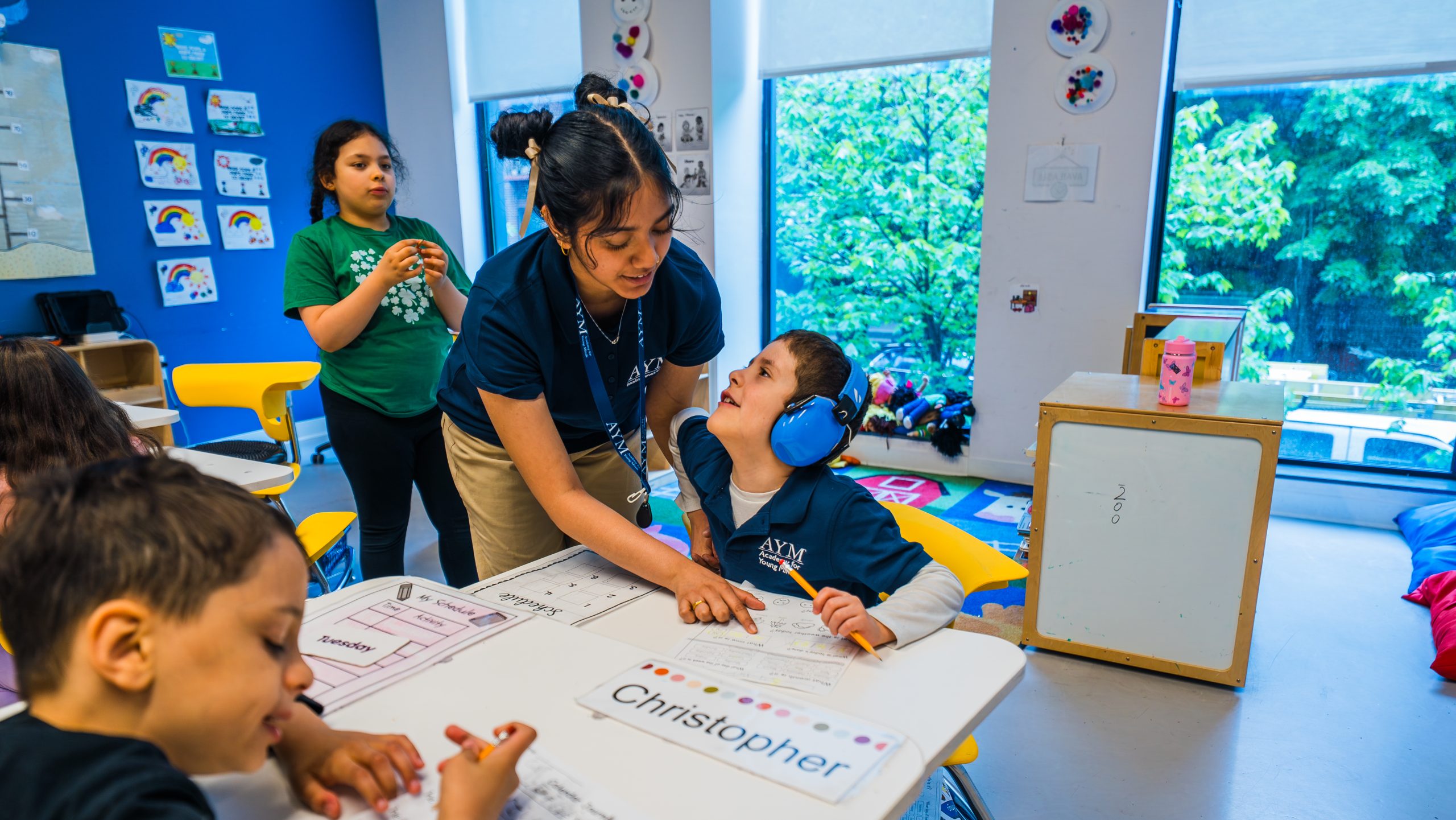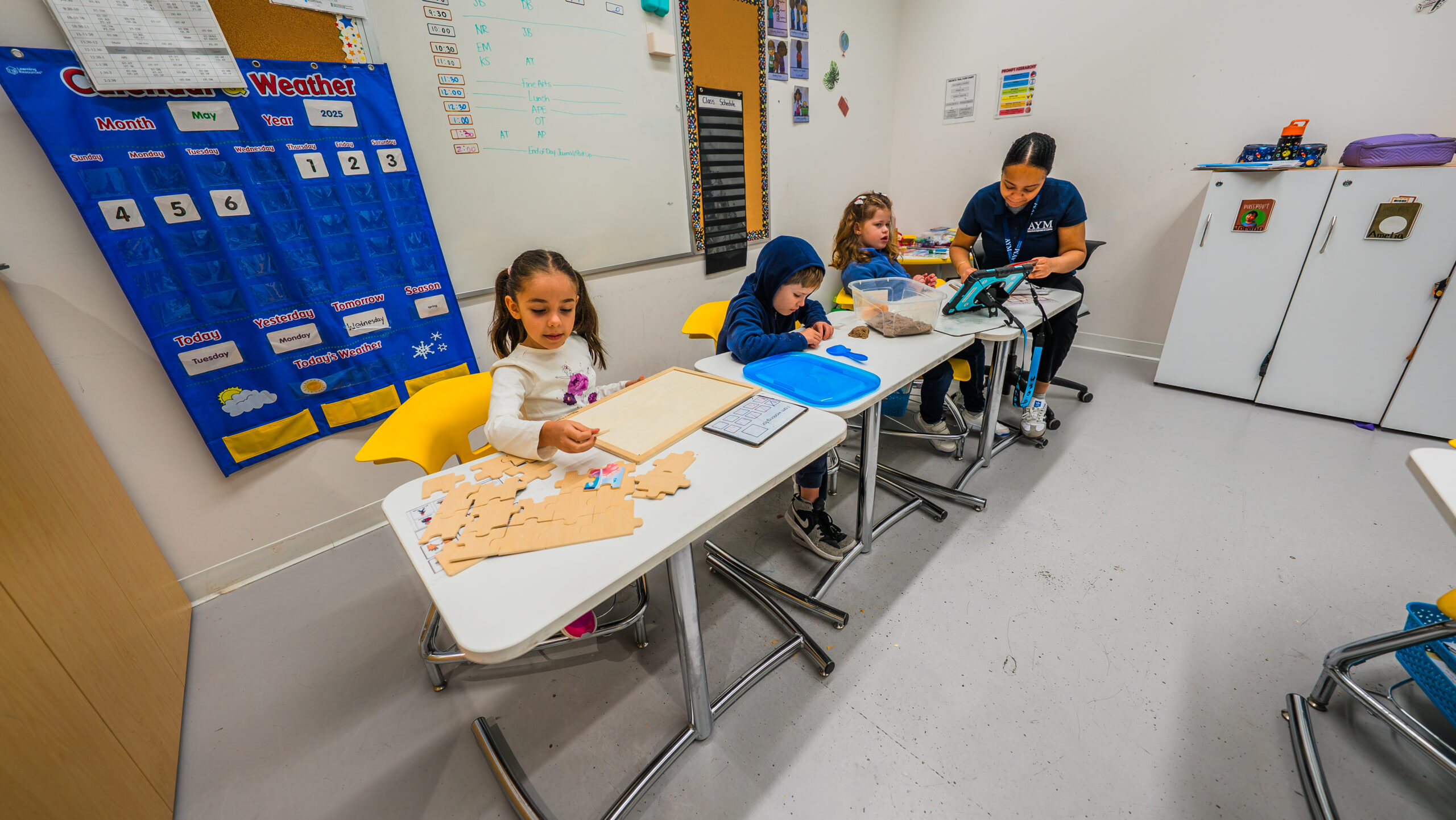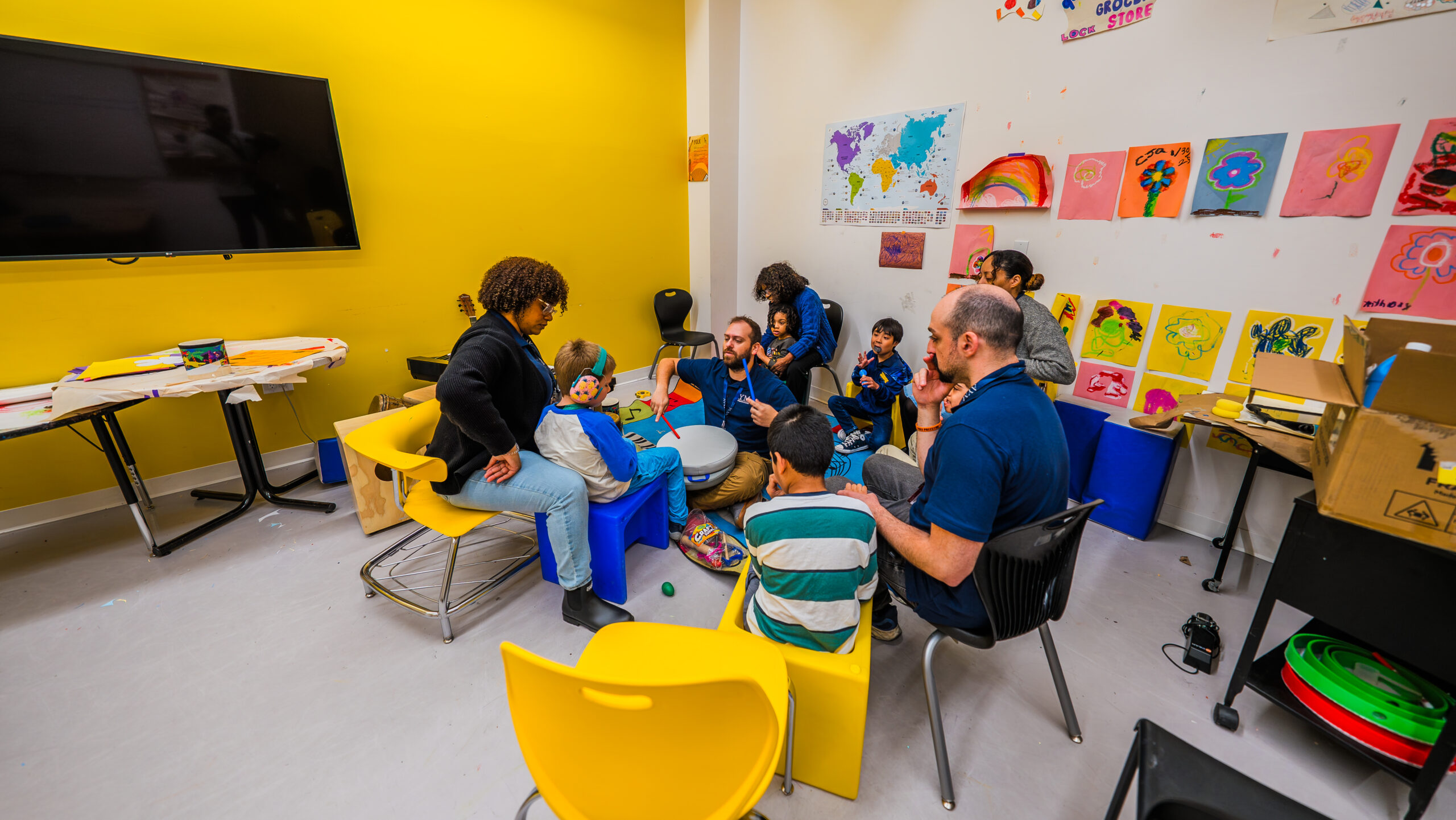Understanding Prompting in ABA: Why It’s Used and How It Fades Over Time
Applied Behavior Analysis (ABA) plays an integral role in AYM’s teaching strategy, providing a structured yet compassionate approach to learning that is specifically tailored to meet the unique needs of children with autism. Through our individualized use of ABA as part of our daily life at AYM, we are able to foster independence, confidence, and the ability to thrive in both academic and everyday settings.
One of the essential components of ABA is prompting, a technique that helps guide children toward the correct response while they’re learning new skills. By offering just the right amount of assistance, ABA practitioners can reduce frustration and reinforce positive learning experiences.
Understanding prompting and how it fades over time can be incredibly helpful in supporting your child’s progress both at school and at home.
What Is Prompting?
A prompt is any cue or assistance that helps your child perform a specific task or behavior. It can range from physical guidance, such as hand-over-hand support, to more subtle cues like a verbal reminder or a visual cue. The goal is to provide just enough support to help your child succeed without creating dependency.
If you’re helping your child identify colors, you might use a verbal prompt like “What color is this?” and, if needed, follow it with a gesture, such as pointing to the correct color. This approach guides your child to the correct response while reducing errors and boosting confidence.
Types of Prompts in ABA
When it comes to prompting, there are several types that ABA practitioners use to guide children through learning new skills.
- Physical Prompt: This involves hands-on guidance, such as gently holding your child’s hand to help them grasp a spoon correctly during meals. Physical prompts are often used when a child is first learning a new motor skill and can be gradually reduced as they gain confidence.
- Model Prompt: In this method, you demonstrate the desired behavior so your child can observe and imitate. You might show them how to zip a jacket by slowly completing each step, allowing them to watch before trying it themselves.
- Gesture Prompt: These are non-verbal cues, like pointing or nodding to indicate the correct item or action. If you’re asking your child to find their shoes, a gentle point in the direction of the shoes can serve as a helpful gesture prompt.
- Verbal Prompt: Spoken instructions or hints guide your child through a task. For instance, you might say, “Time to brush your teeth,” or offer more specific guidance like, “Put the toothpaste on the brush first.” Verbal prompts can be simple or more detailed depending on your child’s needs.
- Visual Prompt: These prompts use pictures, written steps, or even video clips to illustrate a task or routine.
- Positional Prompt: This involves placing the correct choice closer to your child to make it more accessible. If you’re asking them to select a snack from two options, positioning the preferred snack slightly closer can subtly encourage the correct choice.
Why Use Prompts at Home?
Prompts can do more than just guide your child. They can create a calmer, more predictable environment for both of you. Whether it’s getting dressed in the morning or completing a bedtime routine, prompts provide structure and consistency, reducing the chances of misunderstandings and frustration.
By using prompts, you are reinforcing positive behaviors in a way that feels supportive rather than corrective. If your child struggles with completing multi-step tasks like setting the table, for instance, using a visual schedule can break down each step, making the task more manageable. As they gain confidence, you can gradually fade these prompts, allowing them to complete the task more independently.
How Prompting Fades Over Time
The ultimate goal of prompting is to help your child become more independent. That’s where fading comes in. Prompt fading gradually reduces the level of assistance as your child becomes more capable. This way, they learn to perform the task without relying on prompts.
For example, if you’re teaching your child to tie their shoes, you might start with hand-over-hand guidance. As they gain confidence, you could move to a light touch on the wrist, then a verbal reminder, and finally, let them try it on their own without any prompt.
Fading prompts appropriately is essential to prevent your child from becoming dependent on them. By gradually reducing the intensity or frequency of prompts, you help your child gain confidence in their abilities. Over time, they’ll be able to perform daily tasks with less guidance, and more independence.
If you’d like to learn more about how AYM School uses ABA strategies to support your child’s learning, reach out to our team. Whether it’s prompting, fading, or other evidence-based techniques, we’re here to help you and your child thrive at home and in the classroom.
Resources:
https://howtoaba.com/the-prompt-hierarchy/
https://www.appliedbehavioranalysisedu.org/what-is-prompting-and-how-is-it-used-in-aba-therapy/



